Changes in the Ecological Footprint of Rural Populations in the Taihang Mountains, China
Abstract
:1. Introduction
2. Study Area and Data Source
2.1. Study Area
2.2. Data
3. Methods
3.1. Ecological Footprint Analysis
3.2. Household Classification
3.3. Demographic Characteristic
4. Results
4.1. Changes in the Ecological Footprint and Ecological Footprint per Capita
4.2. Changes in the Ecological Footprint per Capita of Cropland
4.3. Changes in the Ecological Footprint per Capita in Terms of the Forest Area
4.4. Changes in the Ecological Footprint per Capita on Grassland
5. Discussion
6. Conclusions
Author Contributions
Funding
Acknowledgments
Conflicts of Interest
References
- Rees, W.; Wackernagel, M. Urban ecological footprints: Why cities cannot be sustainable—And why they are a key to sustainability. Environ. Impact Assess. Rev. 1996, 16, 223–248. [Google Scholar] [CrossRef]
- Lall, S.; Selod, H.; Shalizi, Z. Rural-Urban Migration in Developing Countries: A Survey of Theoretical Predictions and Empirical Findings; The World Bank: Washington, DC, USA, 2006. [Google Scholar]
- Li, S.; Sun, Z.; Tan, M.; Li, X. Effects of rural-urban migration on vegetation greenness in fragile areas: A case study of Inner Mongolia in China. J. Geogr. Sci. 2016, 26, 313–324. [Google Scholar] [CrossRef]
- Tan, M.; Li, X.; Yan, J.; Xin, L.; Sun, L. Length of stay in urban areas of circular migrants from the mountainous areas in China. J. Mt. Sci. 2016, 13, 947–956. [Google Scholar] [CrossRef] [Green Version]
- Adger, W.N. Social and ecological resilience: Are they related? Prog. Hum. Geogr. 2000, 24, 347–364. [Google Scholar] [CrossRef]
- Li, A.; Wang, A.; Liang, S.; Zhou, W. Eco-environmental vulnerability evaluation in mountainous region using remote sensing and GIS—A case study in the upper reaches of Minjiang River, China. Ecol. Model. 2006, 192, 175–187. [Google Scholar] [CrossRef]
- Kräuchi, N.; Brang, P.; Schönenberger, W. Forests of mountainous regions: Gaps in knowledge and research needs. For. Ecol. Manag. 2000, 132, 73–82. [Google Scholar] [CrossRef]
- Walters, B.B. Migration, land use and forest change in St. Lucia, West Indies. Land Use Policy 2016, 51, 290–300. [Google Scholar] [CrossRef]
- Aide, T.M.; Grau, H.R. Globalization, Migration, and Latin American Ecosystems. Science 2004, 305, 1915–1916. [Google Scholar] [CrossRef] [PubMed]
- Xystrakis, F.; Psarras, T.; Koutsias, N. A process-based land use/land cover change assessment on a mountainous area of Greece during 1945–2009: Signs of socio-economic drivers. Sci. Total Environ. 2017, 587–588, 360–370. [Google Scholar] [CrossRef] [PubMed]
- Emi, U.; Jintao, X.; Rozelle, S. Grain for Green: Cost-effectiveness and Sustainability of China′s Conservation Set-Aside Program. Land Econ. 2005, 81, 247–264. [Google Scholar]
- He, W.; Yan, J.; Zhou, H.; Li, X. Influencing factors of rural household firewood consumption: Theoretical model and empirical research of typical area in Chongqing Municipality. Acta Ecol. Sin. 2016, 36, 1369–1379. [Google Scholar]
- Grau, H.R.; Aide, T.M. Are Rural–Urban Migration and Sustainable Development Compatible in Mountain Systems? Mt. Res. Dev. 2007, 27, 119–123. [Google Scholar] [CrossRef]
- Rees, W.E. Ecological footprints and appropriated carrying capacity: What urban economics leaves out. Environ. Urban. 1992, 4, 121–130. [Google Scholar] [CrossRef]
- Galli, A.; Wiedmann, T.; Ercin, E.; Knoblauch, D.; Ewing, B.; Giljum, S. Integrating Ecological, Carbon and Water footprint into a “Footprint Family” of indicators: Definition and role in tracking human pressure on the planet. Ecol. Indic. 2012, 16 (Suppl. C), 100–112. [Google Scholar] [CrossRef]
- Hoekstra, A.Y. Human appropriation of natural capital: A comparison of ecological footprint and water footprint analysis. Ecol. Econ. 2009, 68, 1963–1974. [Google Scholar] [CrossRef] [Green Version]
- Xu, Z.; Cheng, G. Impacts of population and affluence on environment in China. J. Glaciol. Geocryol. 2005, 27, 767–773. [Google Scholar]
- Lü, Y.; Zhang, L.; Feng, X.; Zeng, Y.; Fu, B.; Yao, X.; Li, J.; Wu, B. Recent ecological transitions in China: Greening, browning, and influential factors. Sci. Rep. 2015, 5, 8732. [Google Scholar] [CrossRef] [PubMed]
- Li, W.; Li, X.; Tan, M.; Wang, Y. Influences of population pressure change on vegetation greenness in China′s mountainous areas. Ecol. Evol. 2017, 7, 9041–9053. [Google Scholar] [CrossRef] [PubMed]
- Martínez-Zarzoso, I.; Bengochea-Morancho, A.; Morales-Lage, R. The impact of population on CO2 emissions: Evidence from European countries. Environ. Resour. Econ. 2007, 38, 497–512. [Google Scholar] [CrossRef]
- Li, X.; Gao, H.; Han, L.; Liu, J. Spatio-temporal variations in vegetation NPP and the driving factors in Taihang Mountain Area. Chin. J. Eco-Agric. 2017, 25, 498–508. [Google Scholar]
- Wackernagel, M.; Onisto, L.; Bello, P.; Callejas Linares, A.; Susana López Falfán, I.; Méndez Garcı́a, J.; Isabel Suárez Guerrero, A.; Guadalupe Suárez Guerrero, M. National natural capital accounting with the ecological footprint concept. Ecol. Econ. 1999, 29, 375–390. [Google Scholar] [CrossRef]
- Bicknell, K.B.; Ball, R.J.; Cullen, R.; Bigsby, H.R. New methodology for the ecological footprint with an application to the New Zealand economy. Ecol. Econ. 1998, 27, 149–160. [Google Scholar] [CrossRef] [Green Version]
- Lenzen, M.; Murray, S.A. A modified ecological footprint method and its application to Australia. Ecol. Econ. 2001, 37, 229–255. [Google Scholar] [CrossRef]
- Lin, D.; Hanscom, L.; Martindill, J.; Borucke, M.; Cohen, L.; Galli, A.; Lazarus, E.; Zokai, G.; Iha, K.; Wackernagel, M. Working Guidebook to the National Footprint Accounts; Global Footprint Network: Oakland, CA, USA, 2017. [Google Scholar]
- Xie, H.; Chen, X.; Yang, M.; Zhao, H.; Zhao, M. The ecological footprint analysis of 1 kg livestock product of China. Acta Ecol. Sin. 2009, 3264–3270. [Google Scholar]
- Graham, R.L.; Nelson, R.; Sheehan, J.; Perlack, R.D.; Wright, L.L. Current and Potential U.S. Corn Stover Supplies. Agron. J. 2007, 99, 1–11. [Google Scholar] [CrossRef]
- Hao, H.; Zhang, J.; Li, X.; Zhang, H.; Zhang, Q. Impact of livelihood diversification of rural households on their ecological footprint in agro-pastoral areas of northern China. J. Arid Land 2015, 7, 653–664. [Google Scholar] [CrossRef] [Green Version]
- Wang, L.; Gao, J. The ecological footprint of alpine pastures at the village-level: A case study of Hezuo in Gannan Autonomous Prefecture, China. Acta Ecol. Sin. 2012, 32, 3795–3805. [Google Scholar] [CrossRef]
- Cole, M.A.; Neumayer, E. Examining the Impact of Demographic Factors on Air Pollution. Popul. Environ. 2004, 26, 5–21. [Google Scholar] [CrossRef] [Green Version]
- York, R.; Rosa, E.; Dietz, T. Footprints on the Earth: The Environmental Consequences of Modernity. Am. Sociol. Rev. 2003, 68, 279–300. [Google Scholar] [CrossRef]
- Liddle, B.; Lung, S. Age-structure, urbanization, and climate change in developed countries: Revisiting STIRPAT for disaggregated population and consumption-related environmental impacts. Popul. Environ. 2010, 31, 317–343. [Google Scholar] [CrossRef]
- Dietz, T.; Rosa, E.A.; York, R. Driving the human ecological footprint. Front. Ecol. Environ. 2007, 5, 13–18. [Google Scholar] [CrossRef]
- Jia, J.; Deng, H.; Duan, J.; Zhao, J. Analysis of the major drivers of the ecological footprint using the STIRPAT model and the PLS method--A case study in Henan Province, China. Ecol. Econ. 2009, 68, 2818–2824. [Google Scholar] [CrossRef]
- Cole, V.; Sinclair, A.J. Measuring the Ecological Footprint of a Himalayan Tourist Center. Mt. Res. Dev. 2002, 22, 132–141. [Google Scholar] [CrossRef]
- Zhou, P.; Liu, G. The change in values for ecological footprint indices following land-use change in a Loess Plateau Watershed in China. Environ. Earth Sci. 2009, 59, 529–536. [Google Scholar] [CrossRef]
- Yu, X.; Niu, J.; Xu, J. Effects of closing mountain for forest restoration in the watershed of Miyun reservoir, Beijing. For. Stud. China 2004, 6, 28–35. [Google Scholar] [CrossRef]
- Knight, K.W.; Rosa, E.A. Household dynamics and fuelwood consumption in developing countries: A cross-national analysis. Popul. Environ. 2012, 33, 365–378. [Google Scholar] [CrossRef]
- Hosier, R.H.; Dowd, J. Household fuel choice in Zimbabwe: An empirical test of the energy ladder hypothesis. Resour. Energy 1987, 9, 347–361. [Google Scholar] [CrossRef]
- Rohde, R.F.; Moleele, N.M.; Mphale, M.; Allsopp, N.; Chanda, R.; Hoffman, M.T.; Magole, L.; Young, E. Dynamics of grazing policy and practice: Environmental and social impacts in three communal areas of southern Africa. Environ. Sci. Policy 2006, 9, 302–316. [Google Scholar] [CrossRef]
- Arnalds, O.; Barkarson, B.H. Soil erosion and land use policy in Iceland in relation to sheep grazing and government subsidies. Environ. Sci. Policy 2003, 6, 105–113. [Google Scholar] [CrossRef] [Green Version]
- Deaton, A.; Paxson, H.C. Patterns of Aging in Thailand and Cote D′Ivoire; University of Chicago Press: Chicago, IL, USA, 1990; Volume 81. [Google Scholar]
- Robson, J.P. Exploring some of the myths of land use change: Can rural to urban migration drive declines in biodiversity? Glob. Environ. Chang. 2011, 21, 844–854. [Google Scholar] [CrossRef]
- Visvizi, A.; Lytras, M. It′s Not a Fad: Smart Cities and Smart Villages Research in European and Global Contexts. Sustainability 2018, 10, 2727. [Google Scholar] [CrossRef]
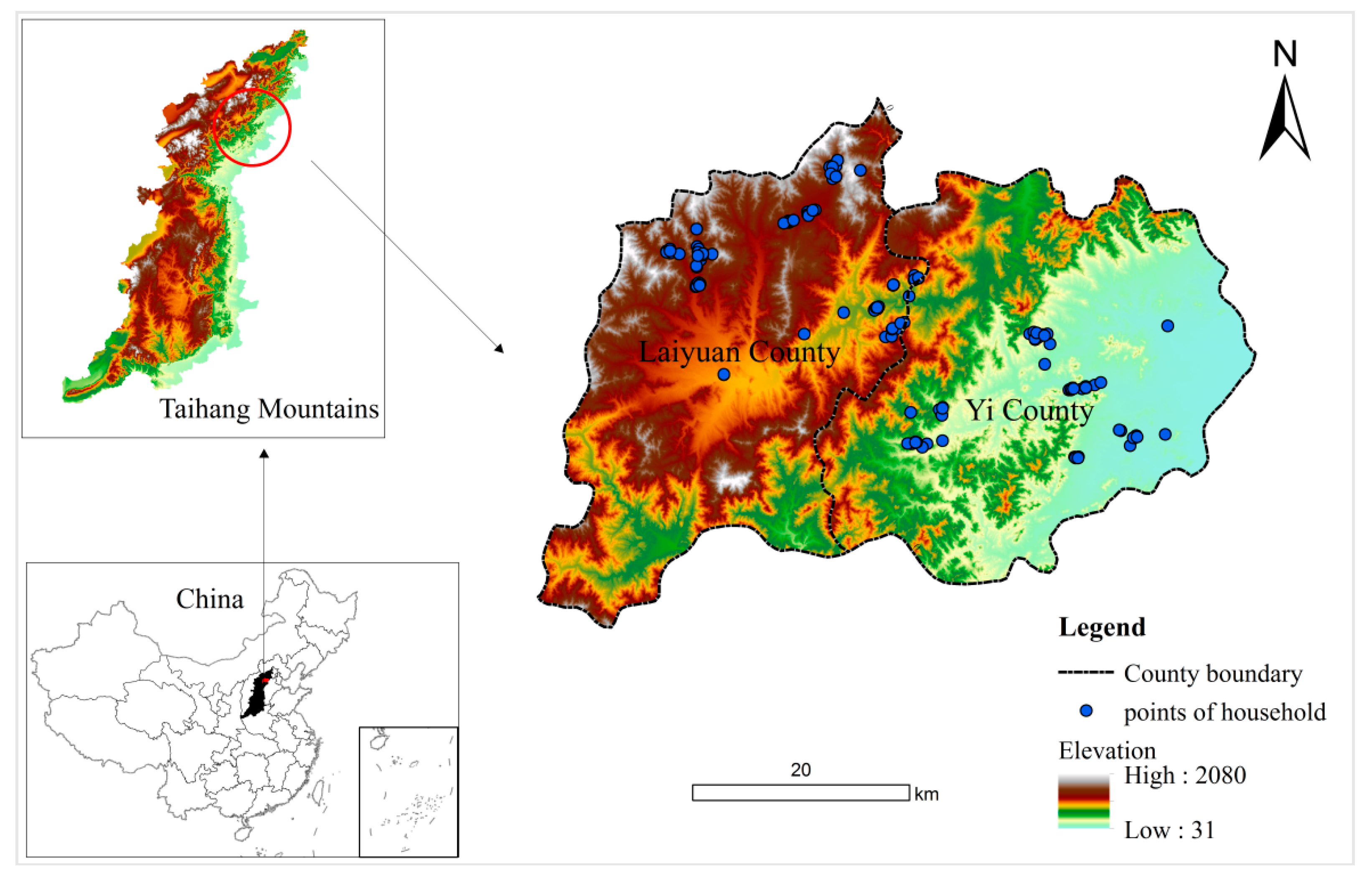
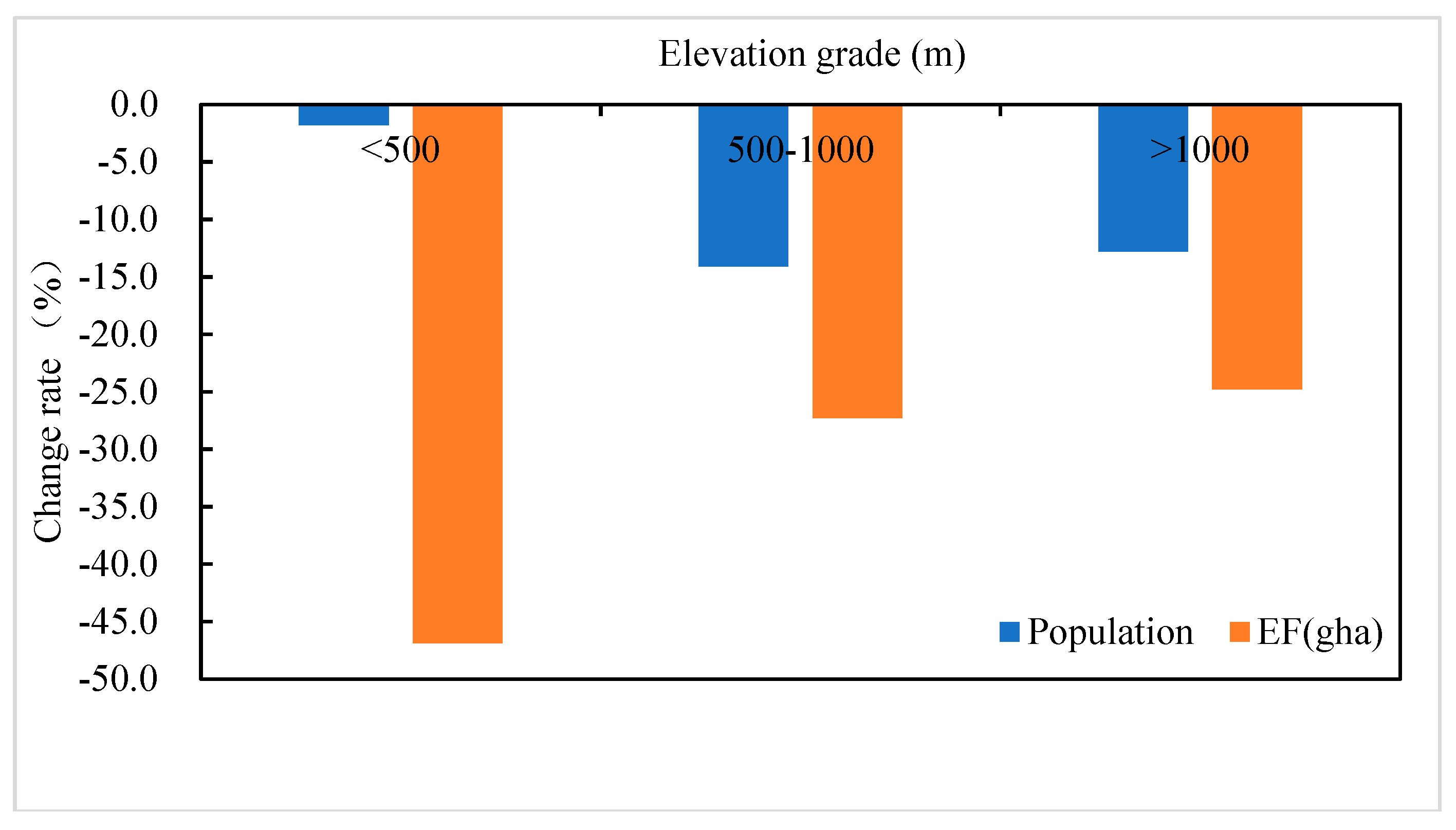
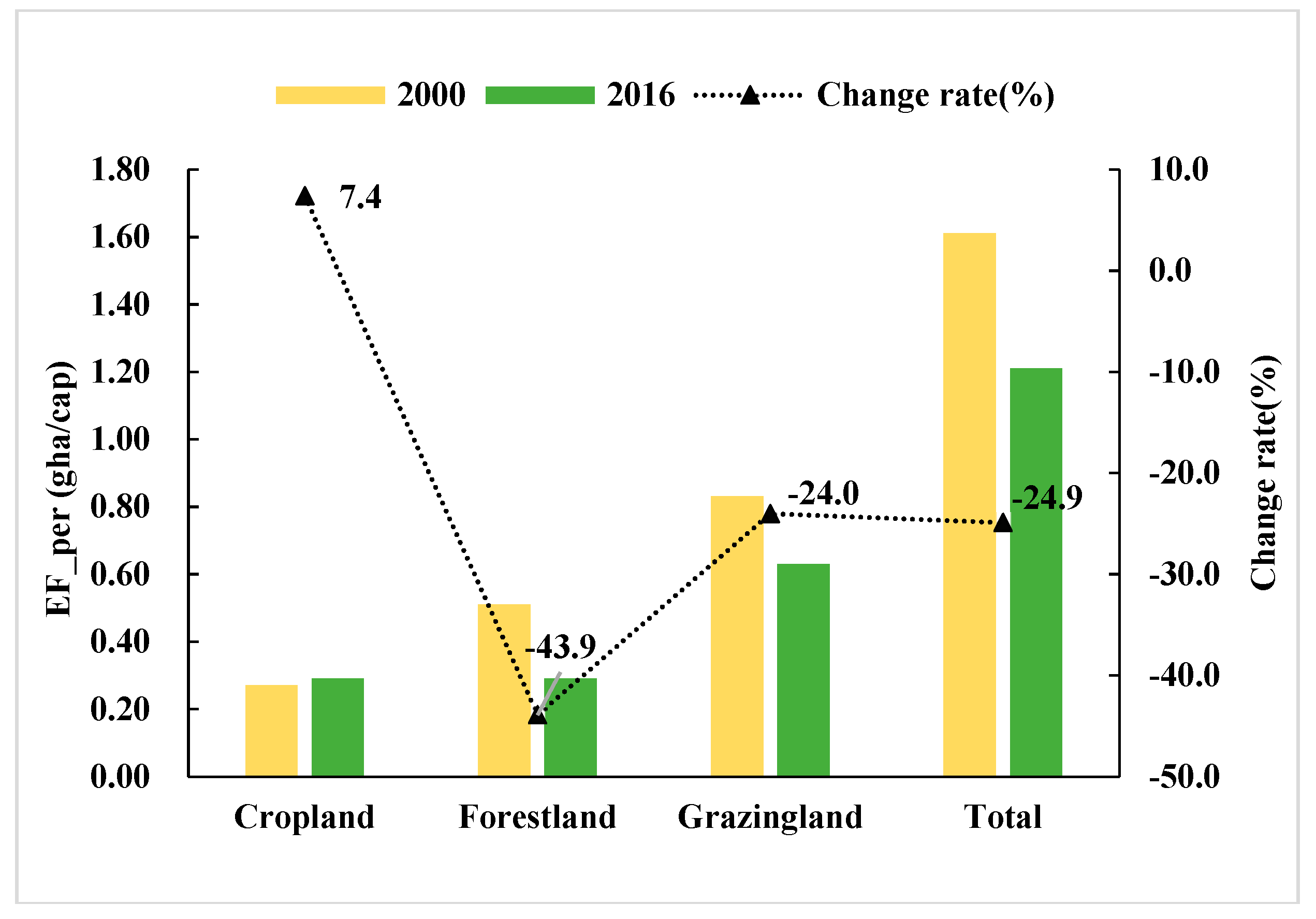
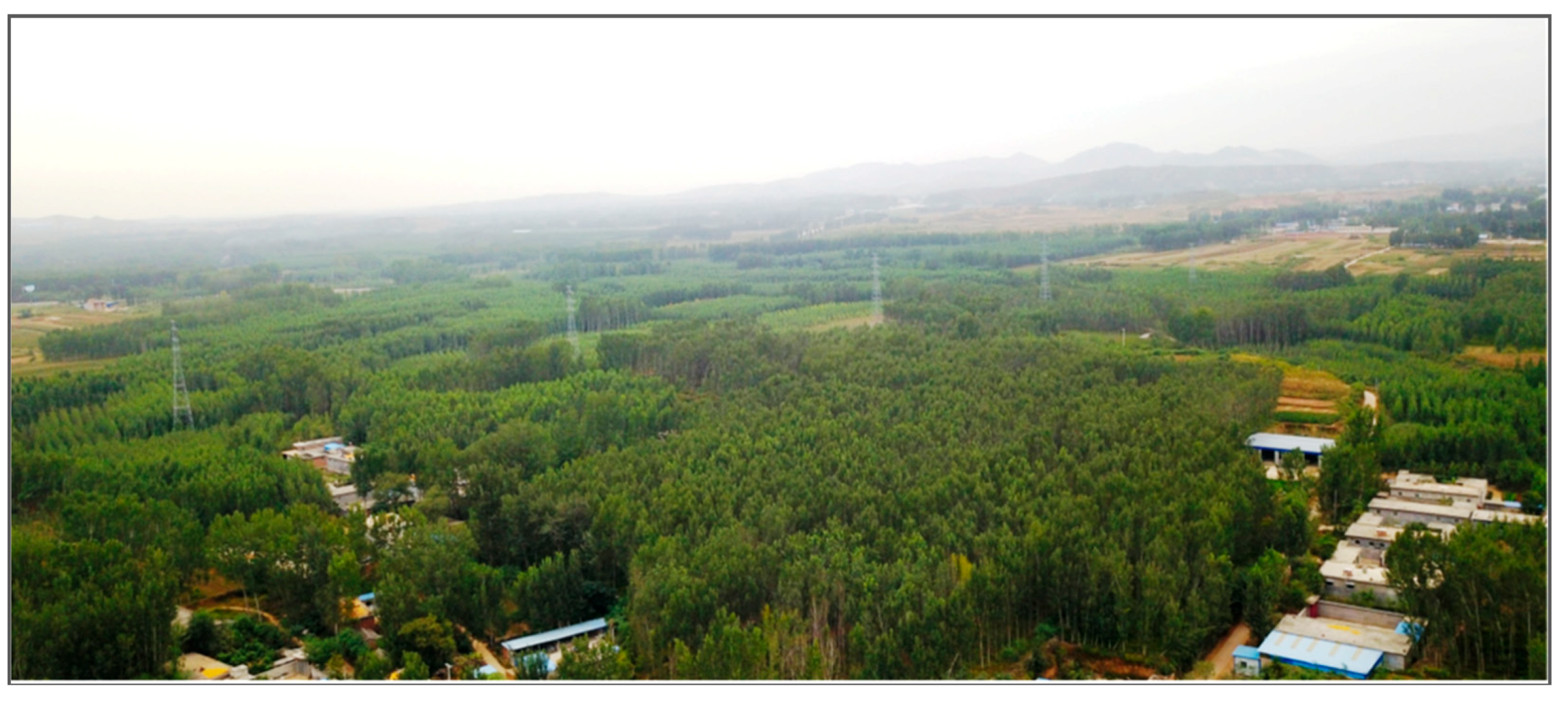
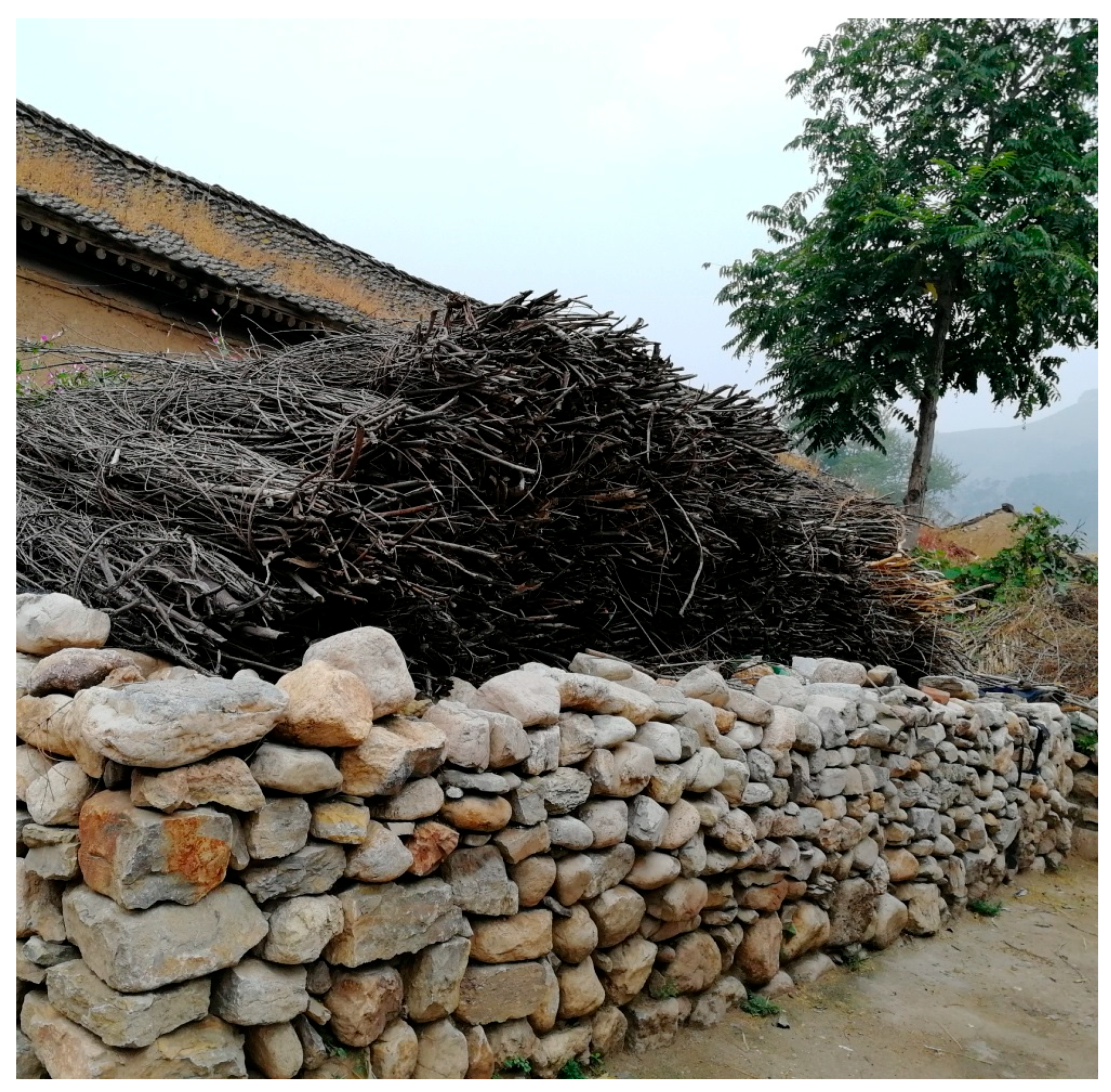


| Types of EF_per (Gha/Cap) | EF per | EFC_per | EFF_per | EFG_per | ||||||||
|---|---|---|---|---|---|---|---|---|---|---|---|---|
| Elevation grade (m) | <500 | 500–1000 | >1000 | <500 | 500–1000 | >1000 | <500 | 500–1000 | >1000 | <500 | 500–1000 | >1000 |
| 2000 | 0.74 | 1.04 | 1.31 | 0.26 | 0.20 | 0.32 | 0.32 | 0.51 | 0.66 | 0.17 | 0.34 | 0.33 |
| 2016 | 0.40 | 0.88 | 1.13 | 0.20 | 0.25 | 0.46 | 0.11 | 0.35 | 0.40 | 0.09 | 0.28 | 0.26 |
| Change rate (%) | −45.9 | −15.4 | −13.7 | −23.1 | 25.1 | 43.8 | −65.6 | −31.4 | −39.4 | −47.1 | −17.6 | −21.2 |
| Group | 2000 | 2016 | Change Rate (%) |
|---|---|---|---|
| G1 | 27 | 78 | 188.9 |
| G2 | 268 | 214 | −20.1 |
| G3 | 184 | 176 | −4.3 |
| G4 | 138 | 118 | −14.5 |
| G5 | 271 | 216 | −20.3 |
© 2018 by the authors. Licensee MDPI, Basel, Switzerland. This article is an open access article distributed under the terms and conditions of the Creative Commons Attribution (CC BY) license (http://creativecommons.org/licenses/by/4.0/).
Share and Cite
Xiao, X.; Hu, M.; Tan, M.; Li, X.; Li, W. Changes in the Ecological Footprint of Rural Populations in the Taihang Mountains, China. Sustainability 2018, 10, 3741. https://doi.org/10.3390/su10103741
Xiao X, Hu M, Tan M, Li X, Li W. Changes in the Ecological Footprint of Rural Populations in the Taihang Mountains, China. Sustainability. 2018; 10(10):3741. https://doi.org/10.3390/su10103741
Chicago/Turabian StyleXiao, Xingyuan, Minyue Hu, Minghong Tan, Xiubin Li, and Wei Li. 2018. "Changes in the Ecological Footprint of Rural Populations in the Taihang Mountains, China" Sustainability 10, no. 10: 3741. https://doi.org/10.3390/su10103741
APA StyleXiao, X., Hu, M., Tan, M., Li, X., & Li, W. (2018). Changes in the Ecological Footprint of Rural Populations in the Taihang Mountains, China. Sustainability, 10(10), 3741. https://doi.org/10.3390/su10103741




